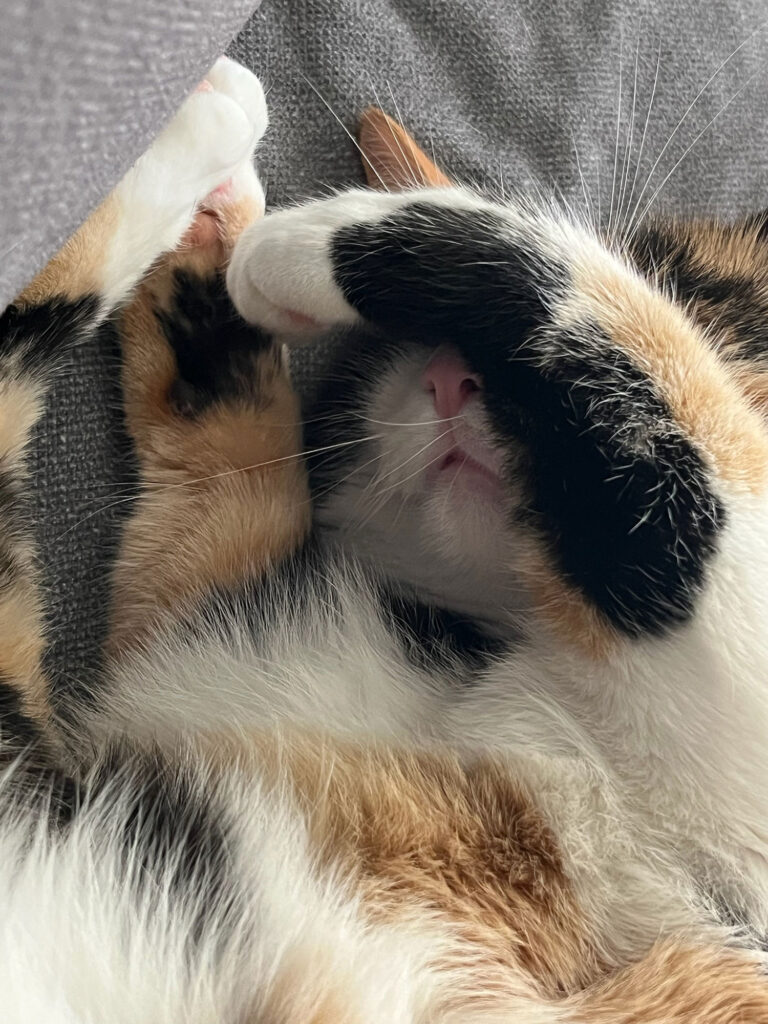1. Ignore him! If you walk in and the cat runs away, just ignore him for a while. Let him get used to your voice, smell and presence first. He will soon realize you are not a threat and when curiosity takes the better of him, he will come over to check you out.
2. Make yourself small. You will look a lot less scary and threatening if you come down to his level. Crouch down or sit on the floor and let the cat come over and give you a sniff. Cats rely heavily on scent, so it’s his way of getting to know you.
3. Act calmly around him. Talk in a soft voice and keep a calm demeanor around him. Avoid loud noises or big, sudden movements. If he’s in a different room, announce yourself before you walk in so you don’t startle him.
4. Slow blink. As primates, we like to look at other live beings in the eye. But for cats, prolonged direct eye contact feels threatening. When first meeting a cat, try half-closing your eyes and blinking slowly, then look away.
5. Play Time! We haven’t yet met a cat that doesn’t like playing. Play time is good for their physical and mental health, for their confidence, and is a fantastic way to help you bond with them too.
Our Top 5 “Do nots”
1. Rub his belly. Contrary to popular belief, when a cat lies on his back, he’s not asking for a belly rub! Exposing his belly and neck makes any animal very vulnerable – this is the ultimate show of trust. Don’t betray that trust by doing the one thing the cat fears! (NB. Some cats DO like their bellies stroked, but they need to trust you unreservedly – just because they allow their owners to do it, it doesn’t mean they will allow you too).As tempting as that belly is, stroke the cheeks instead to release calming pheromones
2. Shout at him. Even if he’s misbehaving, try not to shout at him – you will just scare him and make him fear you, he could either lose his trust in you completely, or retaliate.
3. Use your hands as play toys. Cats are hunters and you’ll be teaching him that your limbs are “fair game” anytime he needs to satisfy that instinct. Instead, use a toy that he can sink his claws and teeth into away from you – it is safer for you and will promote better behaviour from the cat. Feathers on a “fishing pole”: the toy they all go crazy for!
4. Invade his space. Don’t follow a cat around the house, or corner him into a small space so you can touch him. You will just make him feel threatened and more likely to mistrust you. Give him time and space – you cannot rush a cat’s affection!
5. Tease him. Never tease a cat doing something that causes him to jump in fright. Firstly, this can cause injuries if he lands badly, and secondly, the cat doesn’t understand it’s an “innocent joke” and these incidents can make him become mistrusting or even develop behavioural issues.
Patience, respect, games and the occasional treat will always win the day!
We hope these simple tips will help make your next cat sit a lot more enjoyable!

